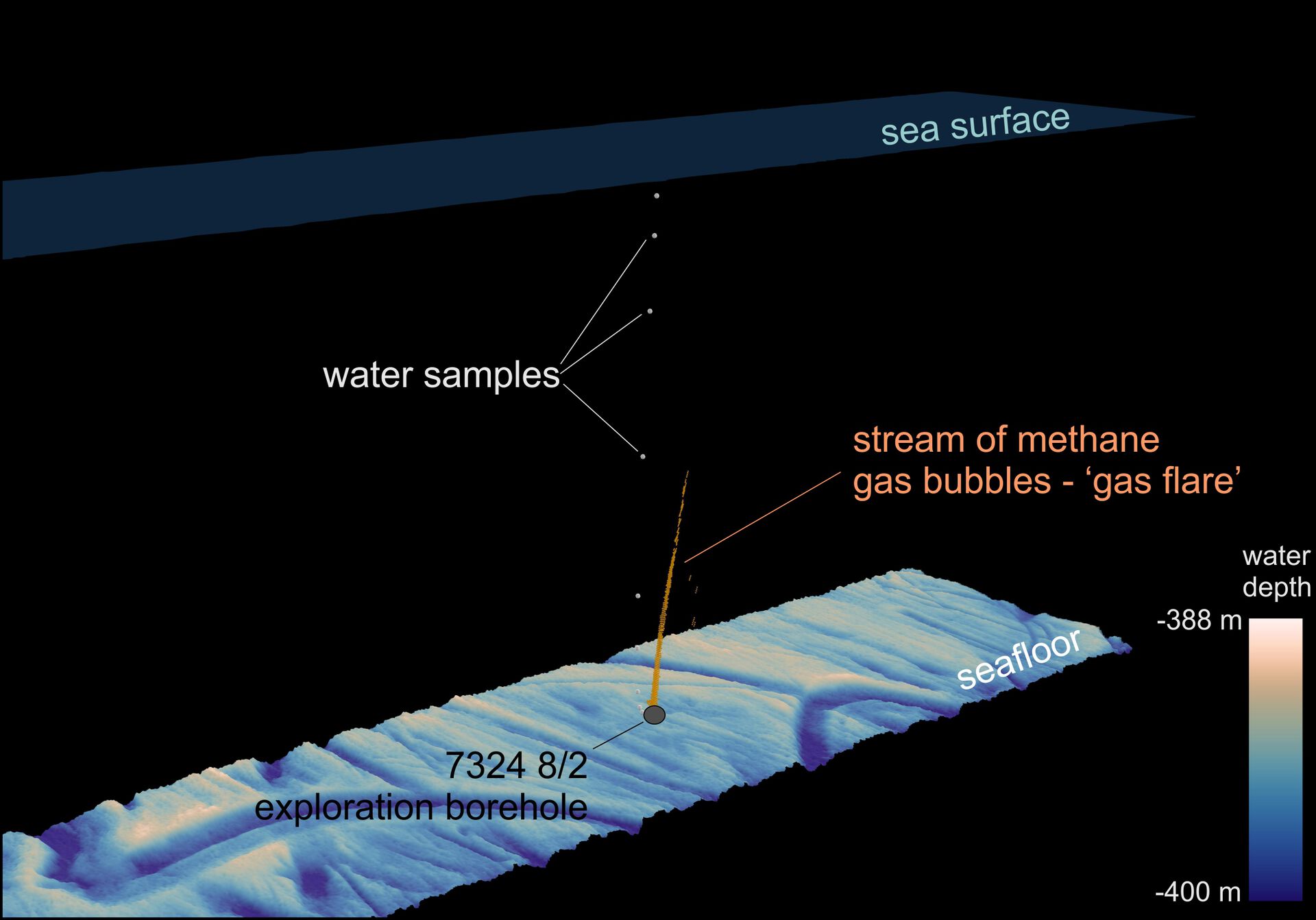The Norwegian Continental Shelf hosts a suite of geological structures with significant volumes of hydrocarbons. Natural and man-made (anthropogenic) seepage of hydrocarbon gas (e.g. potent greenhouse gas methane) from the subsea reservoirs and exploration boreholes has been documented across the shelf. In the Norwegian exclusive economic zone around 3,000 wells have been plugged and abandoned, and >6,000 operating wells are headed for decommissioning in the next decades.
In this light, there is a growing interest in the hydrocarbon exploration industry and research in understanding the origin and magnitude of gas seepage related to boreholes.
Here we provide a newly acquired multidisciplinary dataset (multibeam echosounder data, water column geochemical data and 3D seismic data) from the Barents Sea Shelf documenting both, natural and borehole-related gas seepage from the seafloor into the ocean water (Figure).
Barents Sea region represents a new frontier for hydrocarbon exploration with about 150 wells drilled so far. In 2020 and 2022 CAGE-UiT, the Norwegian Petroleum Directorate (NPD) and UiO joined efforts to acquire a large set of the water column and bathymetry data covering >80 wells and several natural seeps active in the Barents Sea. 3D seismic data to investigate hydrocarbon distribution and migration below the seafloor are available at several of the studied locations. Analysing this multidisciplinary data set will unravel whether the observed gas leakages originate directly from the reservoirs, shallow gas accumulations or gas hydrates, and how much hydrocarbon gas is released in the ocean water and potentially in the atmosphere.
The outcomes of this project will also contribute to making accurate predictions of environmental impacts and fine-tune future monitoring and mitigation strategies.
The project aims to address the following research questions:
- How many wells are currently leaking?
- What are the origin and pathways of the fluids?
- What is the magnitude of methane emissions?
- How much methane reaches the sea surface?
What you will learn:
- Processing and interpretation of multibeam data to map the seafloor bathymetry and identify gas leakage sites in FMMidwater, Qimira and Fledermaus software
- Interpretation of 3D seismic data using Petrel software
- Analytical techniques and interpretation of water column geochemical data
